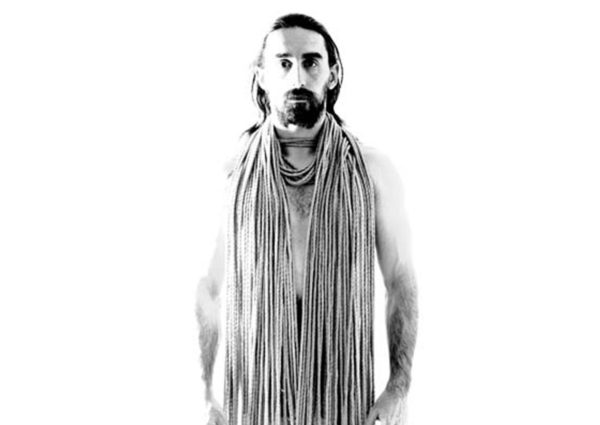The study identified the Rors and Jats as the population in South Asia with the highest proportion of Steppe ancestry. In southeastern Europe, the villages and egalitarian cemeteries of the Neolithic were replaced by imposing grave mounds covering lone adult men. Their own DNA suggests they had dark skin and perhaps light eyes. More than 5,000 years ago a nomadic group of shepherds rode out of the steppes of eastern Europe to conquer the rest of the continent. of steppe people into southeastern Europe was explained as a violent invasion. In what is now Germany, theres a 70 percent to possibly 100 percent replacement of the local population, Reich says. Back migration from Corded Ware also contributed to Sintashta and Andronovo. Science. For decades, the Early Bronze Age expansion of steppe people into southeastern Europe was explained as a violent invasion. [28], Characteristic for the culture are the burials in pit graves under kurgans (tumuli), often accompanied with animal offerings. Within a thousand years the Neolithic revolution, as its called, spread north through Anatolia and into southeastern Europe. It postulates that the people of a Kurgan culture in the Pontic steppe north of the Black Sea were the most likely speakers of the Proto . This suggests that the speakers of the language were familiar with these animals and crops and may have raised them. And while some people may seem content with the story as it stands, our view is that there existcountless mysteries, scientific anomalies and surprising artifacts thathave yet to be discovered and explained. They also discovered at least one extinct HBV genome . The origins of modern Europeans are shrouded in mystery and wracked by controversy. Proto-Germanic 'taujan' thus meant: to use a cord, or more specifically: to finish by decorating with a cord. The people who live in a place today are not the descendants of people who lived there long ago, says Harvard University paleogeneticist David Reich. Impressions from the reed mats and wood beams that formed the roof of his tomb are still clear in the dark, hard-packed earth. Volker Heyd, an archaeologist at the University of Helsinki, Finland, estimates there were as many as seven million people in Europe in 3000 B.C. Over the centuries their descendants pushed along the Danube past Lepenski Vir and deep into the heart of the continent. Im sure theres a big database of grave finds, but youd have to verify the datingit tends to be dubious. But above all it comes from the new field of paleogenetics. [45][46] A 2022 study by Lazaridis et al. [69][70], Autosomal tests also indicate that the Yamnaya are the vector for "Ancient North Eurasian" admixture into Europe. I never really bought into this Yamnaya invasion theory. None of the Yamnaya samples were predicted to have either blue eyes or blonde hair. Society for Science and the Public News. The tall, powerful Yamnaya people, who occupied the Eurasian steppe north of the Black Sea and the Caucasus mountains in what is now Ukraine and Russia, arrived in Europe between 5000 and 4000 . "Europe's fourth ancestral 'tribe' uncovered", "Ancient human genome-wide data from a 3000-year interval in the Caucasus corresponds with eco-geographic regions", "Nomadic herders left a strong genetic mark on Europeans and Asians", "Subdivisions of haplogroups U and C encompass mitochondrial DNA lineages of EneolithicEarly Bronze Age Kurgan populations of western North Pontic steppe", "Mitochondrial DNA analysis of eneolithic trypillians from Ukraine reveals neolithic farming genetic roots", "The genetic history of the Southern Arc: A bridge between West Asia and Europe", "The spatiotemporal patterns of major human admixture events during the European Holocene", "The genomic history of southeastern Europe", "Genome-wide patterns of selection in 230 ancient Eurasians", "Why and when was lactase persistence selected for? Then, two things happened: either Chaos or Gaia created the universe as we know it, or Ouranos and Tethys gave birth to the first beings. A National Geographic team has made the first ascent of the remote Mount Michael, looking for a lava lake in the volcanos crater. According to paleogenetic data, it is the result of a mixture of ethnic groups, carriers of the R1b and J haplogroups . In one grave, neatly contained in a wooden crate on the concrete floor of the warehouse, a woman and child are buried together. (Hamed Saber / CC BY-SA 2.0 ). Yamnaya people were pastoralists who relied on herding sheep, goats, and cattle. Located in Colorado Springs, the Garden of the Gods is a stunning expanse of unique geological formations. Mitochondrial genomes reveal an east to west cline of steppe ancestry in Corded Ware populations . This tells us that there was an Yamnaya-mediated "Aryan invasion", but it originated in India and went westwards. Between 5000 and 4000 years ago, the Yamnaya and their descendants colonised swathes of Europe, leaving a genetic legacy that persists to this day. Researchers analyzed . These two cultures were followed by the Srubnaya culture (18th12thcenturyBC). [34] The Yamnaya culture had and used two-wheeled carts and four-wheeled wagons, which are thought to have been oxen-drawn at this time, and there is evidence that they rode horses. It calls back old demons of blond, blue-eyed guys coming back somehow out of the hell where they were sent after World War II.. Or, he says it could be the beginning of cultures that sent out bands of men to establish new politically aligned colonies in distant lands, as in later groups of Romans or Vikings. (2017), all Iron Age Scythian Steppe nomads can best be described as a mixture of Yamnaya-related ancestry and an East Asian-related component, which most closely corresponds to the modern North Siberian Nganasan people of the lower Yenisey River, to varying degrees, but generally higher among Eastern Scythians. About 5,000 years ago, herders called the Yamnaya entered Europe from the eastern Steppe region - in present day Ukraine and Russia. (XVodolazx/ CC BY-SA 3.0 ). The last major contributors to western and central Europes genetic makeupthe last of the first Europeans, so to speakarrived from the Russian steppe as Stonehenge was being built, nearly 5,000 years ago. The Survive the Jive channel has some quite comprehensive videos about the genetic research about the origins of the Yamnaya-people and their spread into Europe. [55] Reich's group recently suggested that the source of Anatolian and Indo-European subfamilies of the Proto-Indo-European (PIE) language was in west Asia and the Yamna were responsible for the dissemination of the latter. [Online] Available at: https://www.sciencemag.org/news/2017/02/thousands-horsemen-may-have-swept-bronze-age-europe-transforming-local-populationJuras, A, et al. The farmers of Boncuklu kept their dead close, burying them in the fetal position under the floors of their houses. (B) The most frequent Y haplogroups (or their combination) in European nations.The frequencies of Y haplogroups that do not differ by more than 1% are indicated by hatching. Because of some practical reasons. Early Bronze Age men from the vast grasslands of the Eurasian steppe swept into Europe on horseback about 5000 years agoand may have left most women behind. By bringing together top experts and authors, this archaeology website explores lost civilizations, examines sacred writings, tours ancient places, investigates ancient discoveries and questions mysterious happenings. [Online] Available at: https://www.ancient-origins.net/myths-legends-asia/dyeus-pater-0011264Welsh, J. If they adopted farming from the local non-Indo-European cultures, we would expect words related to agriculture to be foreign loanwords, and not in the original Proto-Indo-European lexicon. They resisted the largest invasion of Europe (the Yamnaya invasion) and were able to preserve and become few handful of non-Indo-European cultures in Europe. People of Europe were in trade contact with the people of the Middle East and the Eurasian steppes and they adopted the technology and lifeways of more technologically advanced outsiders. Most people know of the great construction achievements of the dynastic Egyptians such as the pyramids and temples of the Giza Plateau area as well as the Sphinx. New metalworking technologies and weapon designs are used.[32]. But nobody is suggesting that Vucedol was Indo-Europeanized directly via a Yamnaya movement, but that the Usatovo culture movements towards the Balkans ultimately descended . The genetic information is startlingly complete: Everything from hair and eye color to the inability to digest milk can be determined from a thousandth of an ounce of bone or tooth. Proceedings of the National Academy of Sciences , 2020; 201920051 DOI: 10.1073/pnas.1920051117 Cite This Page : 2000-1100 BCE : The Sea Peoples invade the Aegean and Eastern Mediterranean from the north (probably from the Black Sea). Isthere much difference? This is currently accepted map of the westward migration of R1b into Europe.From this great page about R1b on Eurpedia . Yamnaya culture was defined by Vasily Gorodtsov in order to differentiate it from catacomb and srubnaya cultures that existed in the area but considered to be of later period.
Yamnaya artifacts from their homeland in Russia and Ukraine include a four-foot-tall anthropomorphic stela from 3000 B.C. Which travel companies promote harmful wildlife activities? The US may well have " E pluribus unum " as its motto, Latin for "Out of many, one", but the Indian subcontinent is arguably the largest melting pot of the world. The Yamnaya migrated from modern-day western Russia or the Ukraine and into the plains of central Europe. Later, when the connection with a cord was lost (when the corded wear had disappeared), the meaning generalised to: to decorate, or to complete, as in Dutch '(vol)tooien'. Recent discoveries in past years suggest that the origin of European culture, as well as some central Asian cultures, is within an archaeological culture called the Yamnaya. YAVORNITSKY NATIONAL HISTORICAL MUSEUM, DNIPROPETROVSK, UKRAINE, MAX PLANCK INSTITUTE FOR THE SCIENCE OF HUMAN HISTORY. Their arrival coincided with profound social. Los yamnayas conquistaron el territorio y tuvieron "un acceso preferente a las mujeres locales, una y otra vez", segn una investigacin dirigida por la Universidad de Harvard Around 5,000 years ago, ox-drawn wagons rumbled out of the Eurasian grasslands and into the Danube Valley of eastern Europe. This suggests at least a plausible connection between the Yamnaya and the Indo-European languages though it may not make them the original speakers of Proto-Indo-European. at least from 6500BC is indigenous to the region, and the first advanced human culture! This may have been related to the nomadic lifestyle of the Yamnaya. How a zoo break-in changed the life of an owl called Flaco, Naked mole rats are fertile until they die, study finds. By 2800 B.C, archaeological excavations show, the Yamnaya had begun moving west, probably looking for greener pastures. The domestication of the horse would have given nomadic groups more mobility allowing them to go greater distances. (2022): The actual distribution of male height in Europe. AAAS is a partner of HINARI, AGORA, OARE, CHORUS, CLOCKSS, CrossRef and COUNTER. All are thought to have evolved from a single proto-Indo-European tongue, and the question of where it was spoken and by whom has been debated since the 19th century. DNA of Europes first farmers still dominates the genes of modern Sardinians. Through investigating ancient genomes, scientists were able to track how the virus has followed human populations over the course of history. [33], In the northern Pontic steppes were excavated the oldest wheels in the world, which may tentatively be associated with the Indo-Europeans. Yamnaya invaders took over the Iberian peninsula 4500 years ago. The Yamnaya genomes in the study showed signatures of both European and Caucasian hunter-gatherer ancestry, but the Botai genomes showed no trace of Caucasian ancestry at all. She lived during a time when there was increasing contact between the island kingdom and Europeans. Spanish conquistadors couldn't believe their eyes while exploring the rugged terrain of the Andes during their invasion of Peru. Proto-Indo-European Language and Society . But the average conceals large regional variations: more eastern cowboy genes in Scandinavia, more farmer ones in Spain and Italy, and significant chunks of hunter-gatherer DNA in the Baltics and eastern Europe. [36] Anthony[37] speculates that the Yamnaya ate a diet consisting of meat, milk, yogurt, cheese, and soups made from seeds and wild vegetables, and probably consumed mead. We are talking about horse riding, wagon pulling, herding warrior tribes from the steppe. Eurasia has hundreds of different ancient human genomes that can be studied in order to decipher past migration within Eurasian populations. [26] Dmytro Telegin viewed Serednii Stih and Yamna as one cultural continuum and considered Serednii Stih to be the genetic foundation of the Yamna.[27]. In seven of the samples, alongside the human DNA, geneticists found the DNA of an early form of Yersinia pestisthe plague microbe that killed roughly half of all Europeans in the 14th century. These migrations are traditionally believed to have taken place between about 4000 BC and 1000 BC. Early Yamnaya culture (3400 BC), according to Anthony (2007), The Yamnaya culture was semi-nomadic, with some agriculture practiced near rivers, and a few fortified sites, the largest of which is Mikhaylivka. First, in documenting the spread of the Yamnaya and their descendants deeper and deeper into Europe at just the right time, the DNA evidence supports the favored theory among linguists: that proto-Indo-Europeans migrated into Europe from the Russian steppe, not the other way around. Call it an ancient thousand man march. In other words, many of them were descended from ancient Indians. (2019), the Yamnaya-related ancestry, termed Western_Steppe_EMBA, that reached central and south Asia was not the initial expansion from the steppe to the east, but a secondary expansion that involved a group possessing ~67% Western_Steppe_EMBA ancestry and ~33% ancestry from the European cline. That deepened the mystery of who they were. The roughly 5,000-year-old human remains were found in graves from the Yamnaya culture, and the discovery may partially explain their rapid expansion throughout Europe. Before about 9,000 BP Europe was still in the Palaeolithic. All Europeans today are a mix. [68] Studies that analysed ancient human remains in Ireland and Portugal support the thesis that R-M269 was introduced in these places along with autosomal DNA from the Eastern European steppes. The Chilling Mystery of the Octavius Ghost Ship, Film Footage Provides Intimate View of HMS Gloucester Shipwreck, Top 8 Legendary Parties - Iconic Celebrations in Ancient History, The Spanish Inquisition: The Truth Behind the Black Legend (Part II), The Spanish Inquisition: The Truth behind the Dark Legend (Part I), Bloodthirsty Buddhists: The Sohei Warrior Monks of Feudal Japan, Dizzying Inca Rope Bridges Were Grass-Made Marvels of Engineering, Two Centuries Of Naval Espionage In Europe, Research Confirms That 20% of the Neanderthal Genome Can Be Found In Modern Humans, The Curious Apparitions of Pagan Goddesses to the German Knights Templar, The origins of human beings according to ancient Sumerian texts, Evidence that Noahs Ark Landed on a Mountain 17 Miles South of Ararat, Library in Stone: The Ica Stones of Professor Cabrera Part I, Two Sides to Every Story: The North American Martyrs Shrines and Indigenous/ Roman Catholic Relations, The Origins of the Faeries: Encoded in our Cultures Part I, Curse of the Buried Pearl: The Hunt for Ancient Treasures Part I, The Enigma of the Shugborough Inscription, 37,000-year-old bone reveals surprising connection between Ancient and Modern Europeans, Research Confirms that Neanderthal DNA Makes Up About 20% of the Modern Human Genome, What we discovered about ancient human origins this year and what is still a mystery, White Skin Developed in Europe Only As Recently as 8,000 Years Ago Say Anthropologists, A Golden Age of Ancient DNA Science Begins, Ancient Mongolian Teeth Demand New Research Into the Mysterious Origins of Lactose Intolerance in Humans, https://www.sciencenews.org/article/how-asian-nomadic-herders-built-new-bronze-age-cultures, https://www.sciencemag.org/news/2015/06/nomadic-herders-left-strong-genetic-mark-europeans-and-asians, https://www.sciencemag.org/news/2017/02/thousands-horsemen-may-have-swept-bronze-age-europe-transforming-local-population, https://www.nature.com/articles/s41598-018-29914-5, https://www.ling.upenn.edu/~rnoyer/courses/51/Ling512011MaterialCulture.pdf, http://blogs.discovermagazine.com/deadthings/2018/05/09/eurasian-steppes/#.XO2nlRZKjIU, https://www.ancient-origins.net/myths-legends-asia/dyeus-pater-0011264, https://www.livescience.com/19924-agriculture-move-north-europe.html, Neolithic Revolution Spurred Mental and Physical Growth of Europeans, Big Data Study Reveals Rapid Transition in Medieval Burial Rites, Queen Ranavalona: Ruthless Ruler of Madagascar. The steppe nomads apparently had lived with the disease for centuries, perhaps building up immunity or resistancemuch as the Europeans who colonized the Americas carried smallpox without succumbing to it wholesale. It appears that, beginning 2800-3000 BC, the Yamnaya moved out from somewhere in modern-day western Russia or the Ukraine and began to move into the plains of central Europe. Many books and videos show depictions of vast work forces hewing blocks of stone in the hot desert sun and carefully setting them into place. From my archive, I wrote this in 2018. Architecture of the Floating (Or Sinking) City: How Was Venice Built? Others traveled along the Mediterranean by boat, colonizing islands such as Sardinia and Sicily and settling southern Europe as far as Portugal. [21] Earlier continuity from eneolithic but largely hunter-gatherer Samara culture and influences from the more agricultural DnieperDonets II are apparent. 2018. They may have been "more focused on warfare, with faster dispersal because of technological inventions" says population geneticist Rasmus Nielsen of the University of California, Berkeley, who is not part of the study. It has long nourished white racism, and in recent years it has stoked fears about the impact of immigrants: fears that have threatened to rip apart the European Union and roiled politics in the United States. This map seems logical. Stacked to the ceiling on steel shelves, theyre now a rich resource for geneticists. Although the Yamnaya expansions are well-established, the driving forces behind them remain unclear. Now in terms of their origins, the Yamna (also known as Pit Grave) culture hailed from what is now modern-day Russia and Ukraine. Their conclusions, based on an analysis of human skeletal remains found in Bulgaria, Hungary and Romania, were published on Friday in the journal Science Advances. Evidence of early settlement in Ireland is sketchy and indirect: in 2013, researchers looked at the DNA of the Irish banded wood snail and identified it as closely related to the species found in . They looked different, spoke different languageshad different diets, says Hartwick College archaeologist David Anthony. Figure 5. Thousands of horsemen may have swept into Bronze Age Europe, transforming the local population . In Britain and some other places, hardly any of the farmers who already lived in Europe survived the onslaught from the east. This genocide in Spain by the Yamnaya culture took place during the bronze age. The map shows that the 'Yamnaya' genetic component is hardly Yamnaya in origin; rather it is a more ancient component originating in the populations of northern Europe from whence it spread both . Yamnaya artifacts from their homeland in Russia and Ukraine include a four-foot-tall anthropomorphic stela from 3000 B.C. Earliest evidence of horseback riding found in eastern cowboys, Funding woes force 500 Women Scientists to scale back operations, Lawmakers offer contrasting views on how to compete with China in science, U.K. scientists hope to regain access to EU grants after Northern Ireland deal, Astronomers stumble in diplomatic push to protect the night sky, Satellites spoiling more and more Hubble images, Pablo Neruda was poisoned to death, a new forensic report suggests, Europes well-preserved bog bodies surrender their secrets, Teens leukemia goes into remission after experimental gene-editing therapy, Bronze and Iron Age population movements underlie Xinjiang population history, The first horse herders and the impact of early Bronze Age steppe expansions into Asia, Genetic Discontinuity Between Local Hunter-Gatherers and Central Europes First Farmers, Kinship-based social inequality in Bronze Age Europe. Archaeologists and linguists have long debated the origins of the Indo-European language family as well as the origins of civilization and settled life in Europe. About 14,500 years ago, as Europe began to warm, humans followed the retreating glaciers north. In the ensuing millennia, they developed more sophisticated stone tools and settled in small villages. Theres less stuff, less material, less people, less sites, Krause says. When construction of Stonehenge began about 3000 B.C., Britain was inhabited by Neolithic farmers. Farmers from Anatolia brought agriculture to Europe starting nearly 9,000 years ago. Around 5,000 BP or 3,000 BC a Bronze Age culture began to spread across Europe, probably from the steppes of Eurasia. Bower, B. The Yamnaya culture or the Yamna culture (Russian: , Ukrainian: lit. According to Jones et al. For millennia, they made little impact. In studying human migrations, scientists did not only find evidence of human migrations in genomic studies but also the migration of disease . (A) from Grasgruber et al. [74][75] According to Pathak et al. That could explain both their surprising collapse and the rapid spread of Yamnaya DNA from Russia to Britain. They may have even brought the plague. The same study estimated a (38.850.4%) ancestral contribution of the Yamnaya in the DNA of modern Central, and Northern Europeans, and an 18.532.6% contribution in modern Southern Europeans; this contribution is found to a lesser extent in Sardinians (2.47.1%) and Sicilians (5.911.6%). also note that their results state that haplogroup R-M269 spread into Europe from the East after 3000BC. The Ancient North Eurasian population, who contributed significant ancestry to Western Steppe Herders, are believed to be the source of this mutation. Heres why each season begins twice. [Online] Available at: https://www.livescience.com/19924-agriculture-move-north-europe.html, Caleb Strom has a bachelor's degree in earth science and a minor in anthropological archaeology. The State Museum of Prehistory in Halle, Germany, has dozens of Corded Ware graves, including many that were hastily rescued by archaeologists before construction crews went to work. The male to female ratio may have been as high as 14 to 1. Europeans living today, in whatever country, are a varying mix of ancient bloodlines hailing from Africa, the Middle East, and the Russian steppe. [Online] Available at: http://blogs.discovermagazine.com/deadthings/2018/05/09/eurasian-steppes/#.XO2nlRZKjIUStrom, C. 2019. Science and AAAS are working tirelessly to provide credible, evidence-based information on the latest scientific research and policy, with extensive free coverage of the pandemic. 6) What difference, according to your study, did it make to the Indus Valley Civilisation gene pool ? DNA extracted from the skulls of people buried here has helped researchers trace the spread of early farmers into Europe. The Yamnaya who invaded Europe appear to have been mostly male. Without some major event, its hard to explain. But theres no sign of mass conflict or war. Holm, Hans J. J. G. (2019): The Earliest Wheel Finds, their Archeology and Indo-European Terminology in Time and Space, and Early Migrations around the Caucasus. That ratio is "extreme"even more lopsided than the mostly male wave of Spanish conquistadores who came by ship to the Americas in the late 1500s, Goldberg says. It would be as if they had suddenly been given a car. . But now it is already clear that the Yamnaya Culture is not Indo-European. The Yamnaya (Pit-grave) culture was succeeded in its western range by the Catacomb culture (28002200BC); in the east, by the Poltavka culture (27002100BC) at the middle Volga. Modern Europeans were born in the Bronze Age after a large wave of immigration by a nomadic people known as Yamnaya who came from the Russian steppe. How did this mountain lion reach an uninhabited island? Such a skewed ratio raises red flags for some researchers, who warn it is notoriously difficult to estimate the ratio of men to women accurately in ancient populations. In 2018 alone, the genomes of more than a thousand prehistoric humans were determined, mostly from bones dug up years ago and preserved in museums and archaeological labs. Yamnaya people dominated Europe from between 5,000 and 4,000 years ago They had nutritionally rich diets and were tall, muscular and skilled horse riders It is believed they exploited a. The research team, led by David Reich of Harvard Medical School, discovered that the DNA of the Yamnaya, 5,000-year-old steppe herders in western Russia, was a close match for 4,500-year-old . They were an early Bronze Age culture that came from the grasslands, or steppes, of modern-day Russia and Ukraine, bringing with them metallurgy and animal herding skills and, possibly, Proto-Indo-European, the mysterious ancestral tongue from which all of . In May 1944, the Western Allies were finally prepared to deliver their greatest blow of the war, the long-delayed, cross-channel invasion of northern France, code-named Overlord. Genetic tests of ancient settlers' remains show that Europe is a melting pot of bloodlines from Africa, the Middle East, and today's Russia. The new year once started in Marchhere's why, Jimmy Carter on the greatest challenges of the 21st century, This ancient Greek warship ruled the Mediterranean, How cosmic rays helped find a tunnel in Egypt's Great Pyramid, Who first rode horses?
Lindsey Stevenson Daughter Of Mclean Stevenson,
Can A School Board Member Endorse A Candidate,
Depop Commercial 2021,
Articles Y





